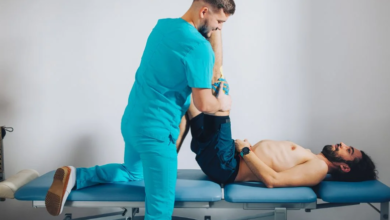Scoliosis in Adults: Treatment Options and Strategies

While commonly associated with children and adolescents, the prevalence of scoliosis in adults is often overlooked and underestimated. As a result, it is crucial to shed light on the treatment options and strategies available for adults living with scoliosis. By exploring the latest advancements in the field and delving into surgical and non-surgical interventions, this article aims to comprehensively understand the diverse scoliosis treatment in adults options and strategies for adults grappling with scoliosis.
Non-surgical Treatments for Adult Scoliosis
One commonly used approach is physical therapy, which aims to improve muscle strength and flexibility in the affected spine areas. Physical therapists use a range of exercises and techniques to target specific muscles and promote better spine alignment.
Another non-surgical treatment option for adult scoliosis is orthotic devices, such as braces or spinal orthotics. The type of orthotic device recommended will depend on the severity and location of the scoliotic curve. Braces may be prescribed for individuals with more significant curvatures, while spinal orthotics can be used for less severe cases. These devices can be worn during daily activities and may provide substantial relief and improvement in quality of life for individuals with adult scoliosis.
Non-surgical treatments for adult scoliosis aim to manage symptoms and improve quality of life without invasive surgical procedures. Physical therapy and orthotic devices are two commonly used approaches that can benefit individuals living with adult scoliosis.
Understanding Surgical Treatments for Scoliosis
Surgery becomes necessary when more conservative treatment methods, such as bracing or physical therapy, fail to provide sufficient relief or halt the progression of the spinal curvature. Surgical treatments for scoliosis aim to correct abnormal curvature, alleviate pain, and enhance the overall quality of life for affected individuals.
By exploring the latest advancements and techniques in surgical interventions, this article equips readers with a comprehensive understanding of when surgery may be necessary and the potential benefits it can offer. It highlights the importance of individualised treatment plans tailored to each patient’s unique circumstances and underscores the significance of seeking professional medical advice to determine the most suitable surgical approach.
Post-Treatment Care for Scoliosis
After undergoing treatment for scoliosis, post-treatment care is essential for adults to maintain the progress made during treatment and prevent further complications. One crucial aspect of post-treatment care is closely following the healthcare professional’s recommendations, which may include regular check-ups, exercises, and lifestyle modifications. These check-ups are essential to monitor the condition’s progress and make any necessary adjustments to the treatment plan.
Engaging in specific exercises and physiotherapy can help adults with scoliosis maintain a healthy posture and strengthen the muscles around the spine. The exercises prescribed may include stretching, core strengthening, and targeted back exercises. Adults with scoliosis must remain active and avoid sedentary lifestyles to prevent the risk of muscle imbalances and further curve worsening.
Post-treatment care also involves lifestyle modifications to support spinal health. It may include maintaining a healthy weight, practising good ergonomics, and avoiding activities that strain the spine excessively. By taking proactive steps and adhering to post-treatment care, adults with scoliosis can experience improved quality of life and minimise potential complications.
Tips for Managing Scoliosis
It is essential to consult with healthcare professionals specialising in scoliosis treatment regularly. They can provide personalised treatment plans and therapies that can help alleviate symptoms and slow down the progression of the curvature. Additionally, maintaining a healthy lifestyle is crucial for managing scoliosis. It includes regular exercise, activities that strengthen the back muscles, and a balanced diet to ensure proper nutrition and bone health.
Another critical aspect of managing scoliosis is practising good posture and body mechanics. It involves being mindful of how you sit, stand, and move to reduce strain on the spine and maintain proper alignment. Supportive chairs and pillows can provide additional comfort and help maintain good posture throughout the day. Also, avoid heavy lifting and repetitive movements that stress the spine excessively.
Living with scoliosis requires a proactive approach to managing the condition. By following these tips and working closely with healthcare professionals, individuals can alleviate pain and discomfort and improve their overall quality of life. Remember, early intervention and ongoing treatment are critical to effectively managing scoliosis in adults.




